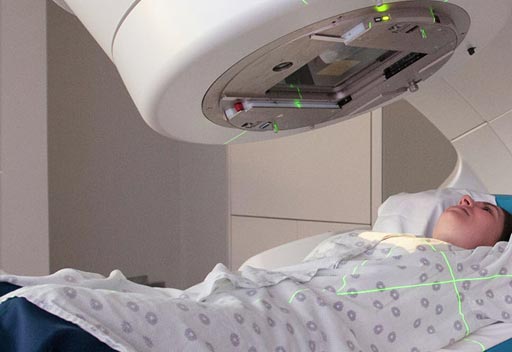New Guidelines for Radiation Therapy in Breast Cancer
By MedImaging International staff writers
Posted on 09 Nov 2017
A new consensus statement provides updated guidelines for the appropriate and safe utilization of accelerated partial-breast irradiation (APBI).Posted on 09 Nov 2017
Developed by researchers at the Cleveland Clinic (Cleveland, OH, USA), Tufts Medical Center (Boston, MA, USA), and other members of the American Brachytherapy Society (Reston, VA, USA) with expertise in breast cancer and breast brachytherapy, the new guidelines are intended to provide updated data for clinicians and recommendations regarding appropriate patient selection and techniques. Appropriate candidates for APBI include patients aged 45 years or older with all invasive histologies and ductal carcinoma in situ (DCIS).

Image: New guidelines have been release for accelerated partial-breast irradiation (Photo courtesy of Cleveland Clinic).
The guidelines suggest tumors should be three cm or less, node negative, estrogen receptor positive or negative, without lymphovascular space invasion, and with negative margins. The strongest evidence is for interstitial brachytherapy and intensity-modulated radiation therapy APBI, with moderate evidence for applicator brachytherapy or three-dimensional (3D) conformal radiotherapy APBI. Intraoperative radiation therapy and electronic brachytherapy should not be offered, regardless of technique, outside of a clinical trial. The new guidelines were published on October 23, 2017, in Brachytherapy.
“The updated guidelines support clinicians by offering them the ability to appropriately select patients for APBI, and data that supports the techniques,” said lead author Chirag Shah, MD, of the Cleveland Clinic. “Guidelines allow for the selection of patients who can finish radiation treatment in one week or less, compared to the traditional period of three to six weeks, and potentially a reduction in side effects depending on the APBI technique.”
APBI is an approach that treats only the lumpectomy bed plus a 1-2 cm margin, rather than the whole breast. Hence, a small volume of irradiation at a higher dose can be delivered in a shorter period of time. There has been growing interest for APBI and other approaches developed under phase I-III clinical studies; these include multicatheter interstitial brachytherapy, balloon catheter brachytherapy, conformal external beam radiation therapy, and intra-operative radiation therapy (IORT).
Related Links:
Cleveland Clinic
Tufts Medical Center
American Brachytherapy Society














